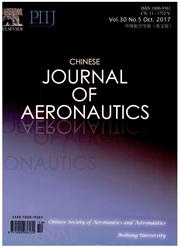

 中文摘要:
中文摘要:
在现在的计算液体动力学(CFD ) 社区, processing 以后被认为是一个过程看参数分发,检测典型结构并且基于计算或试验性的结果揭示液体流动的物理机制。由轮廓的地阴谋, iso 表面,优化,向量和其它是传统的 processing 以后技术。当作为处于许多空气动力学的问题的一重要、批评的流动结构,冲击波几乎不能用这些传统的方法以一个直接方法被检测或区分时,由于有另外的类似的不连续的流动的可能的混乱,结构喜欢滑动线,接触断绝,等等。因此,为在 processing 以后的冲击波的自动察觉的方法为学术研究和工程应用是很重要的。在这篇论文,在 processing 以后站台为冲击波察觉和实现开发的方法论的当前的地位被考察,以及为冲击波的进一步的研究的存在方法和建议的优点和限制的讨论察觉方法。我们也开发一个先进 processing 以后软件,与改进吃惊察觉。
 英文摘要:
英文摘要:
In the present computational fluid dynamics (CFD) community, post-processing is regarded as a procedure to view parameter distribution, detect characteristic structure and reveal physical mechanism of fluid flow based on computational or experimental results. Field plots by contours, iso-surfaces, streamlines, vectors and others are traditional post-processing techniques. While the shock wave, as one important and critical flow structure in many aerodynamic problems, can hardly be detected or distinguished in a direct way using these traditional methods, due to possible confusions with other similar discontinuous flow structures like slip line, contact discontinuity, etc. Therefore, method for automatic detection of shock wave in post-processing is of great importance for both academic research and engineering applications. In this paper, the current status of methodologies developed for shock wave detection and implementations in post-processing platform are reviewed, as well as discussions on advantages and limitations of the existing methods and proposals for further studies of shock wave detection method. We also develop an advanced post-processing software, with improved shock detection.
 同期刊论文项目
同期刊论文项目
 同项目期刊论文
同项目期刊论文
 期刊信息
期刊信息
